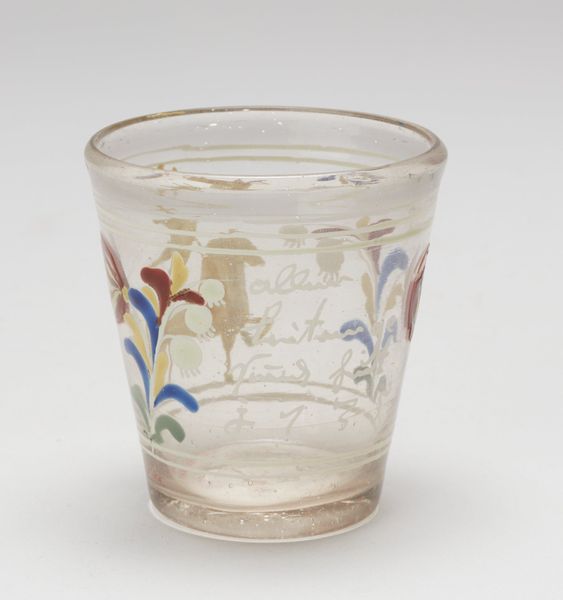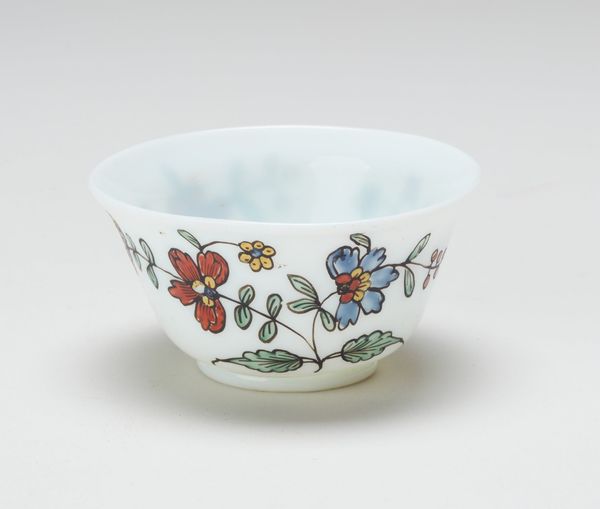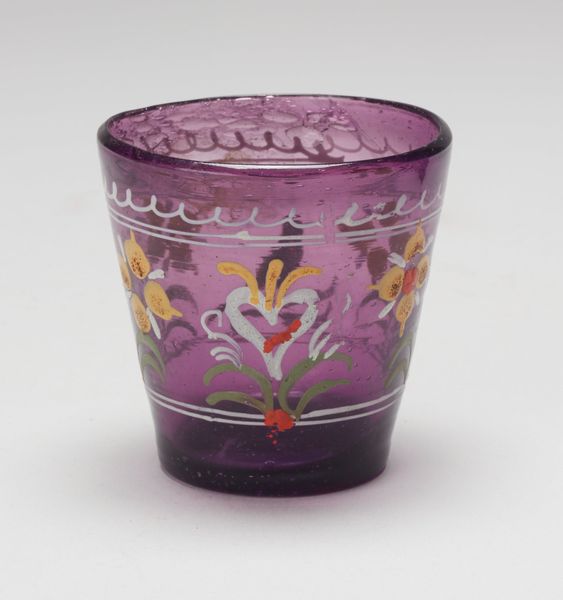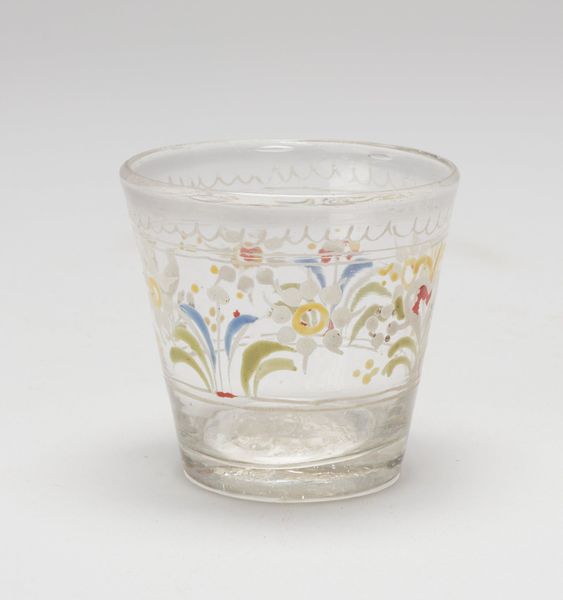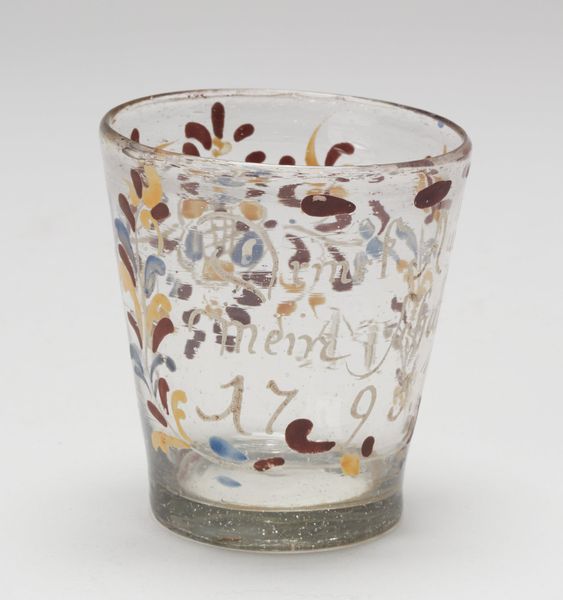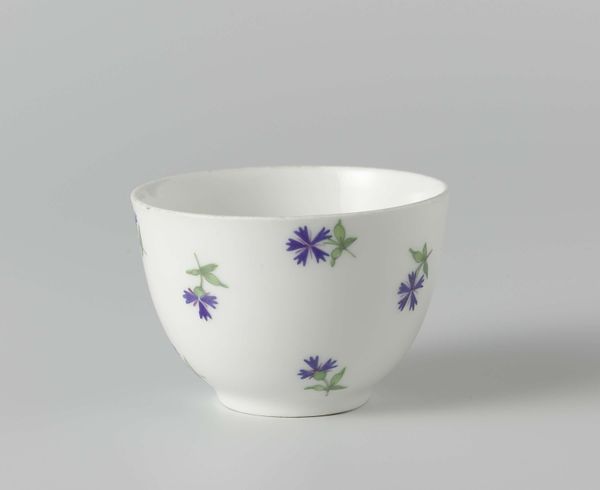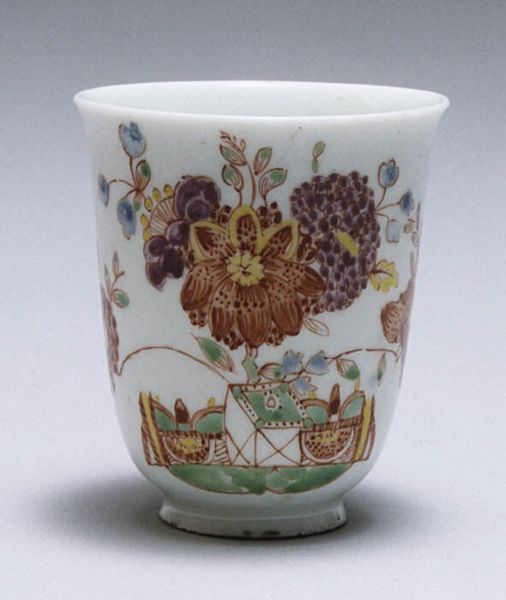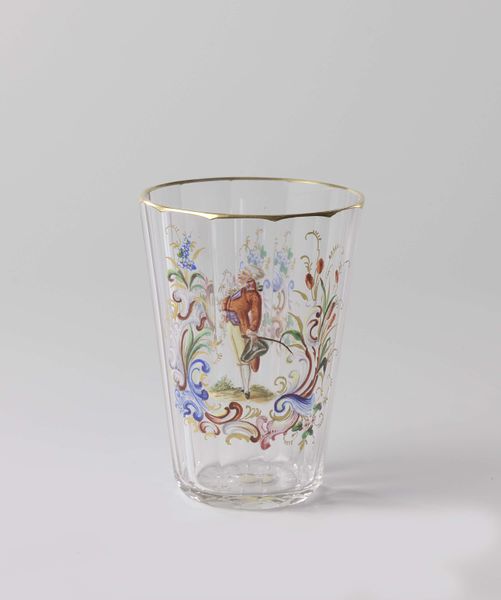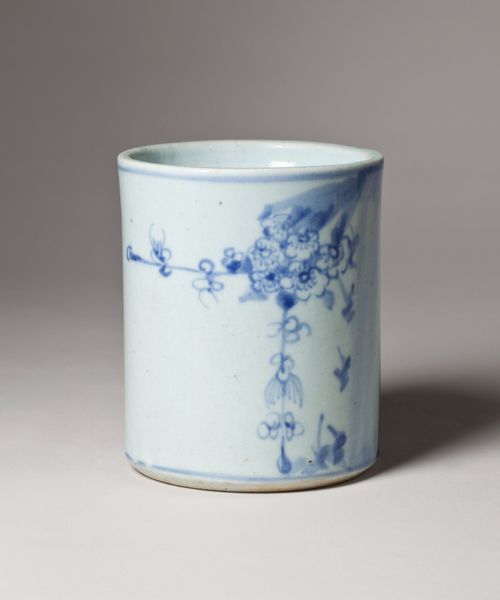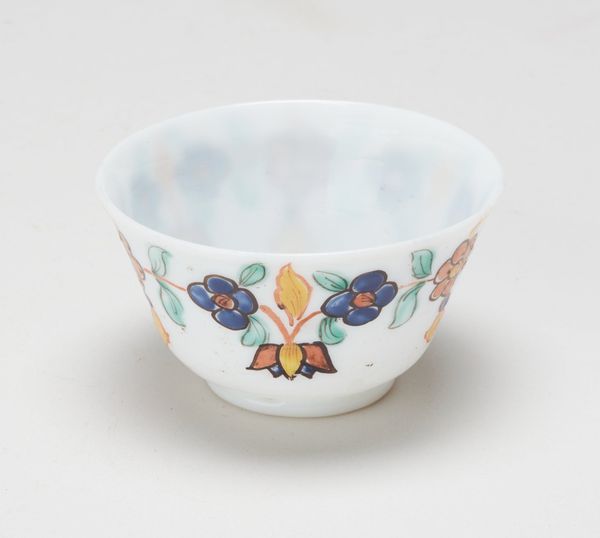
drawing, ceramic, glass
#
drawing
#
pottery
#
ceramic
#
glass
#
ceramic
#
decorative-art
Dimensions: 2 3/4 x 2 5/8 x 2 5/8 in. (7 x 6.67 x 6.67 cm)
Copyright: Public Domain
Curator: This Small Beaker, dating from around the 18th century, presents itself with surprising boldness despite its size. The Minneapolis Institute of Art houses this lovely piece. Editor: I agree! There's something almost childlike in its execution, isn't there? Simple forms, unrefined lines, a directness of expression. It gives me a sense of homespun domesticity. Curator: Precisely. Beakers such as these were often utilitarian, intended for everyday use. However, they’re imbued with the spirit of the craftsman, each brushstroke, each color choice, holds a universe of unspoken cultural cues. Notice how the flower motif may have signified, during its time, prosperity and well-being within a home. Editor: And looking closely, those flower symbols strike me as interesting. The simplicity could also represent resistance, perhaps a quiet refusal to adopt the ornate, academic styles favored by the elite during the 18th century. Craft, especially within a domestic context, has always been a site for coded communication and potential subversion by marginalized groups. Curator: Intriguing to consider. One cannot dismiss how these designs create meaning by looking toward pre-existing visual motifs and symbolism used in folklore that resonated emotionally and psychologically with users and creators alike. Do the number of petals denote something? Is the stem deliberately elongated for a specific reference? Such clues allow us a closer understanding of people who held and loved them. Editor: Certainly. The beaker itself, as a shared object in intimate settings, carries that weight of societal memory. What stories did it witness? Whose lips touched its rim? Consumption is never neutral; this seemingly innocent beaker silently participated in power dynamics of its time, be that economic class or gender divisions. Curator: And let's acknowledge the pure pleasure that this piece offers. There’s joy and visual interest, regardless of time. It resonates as strongly today as it did centuries ago. Editor: Definitely. Studying this seemingly modest artwork forces us to confront what is truly important: stories passed, connections formed, memories lived, through even the simplest object.
Comments
No comments
Be the first to comment and join the conversation on the ultimate creative platform.
